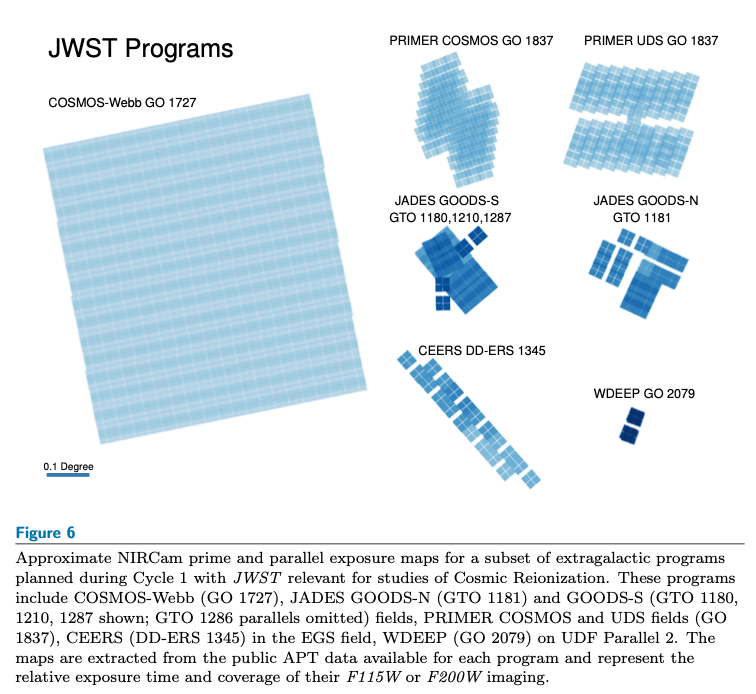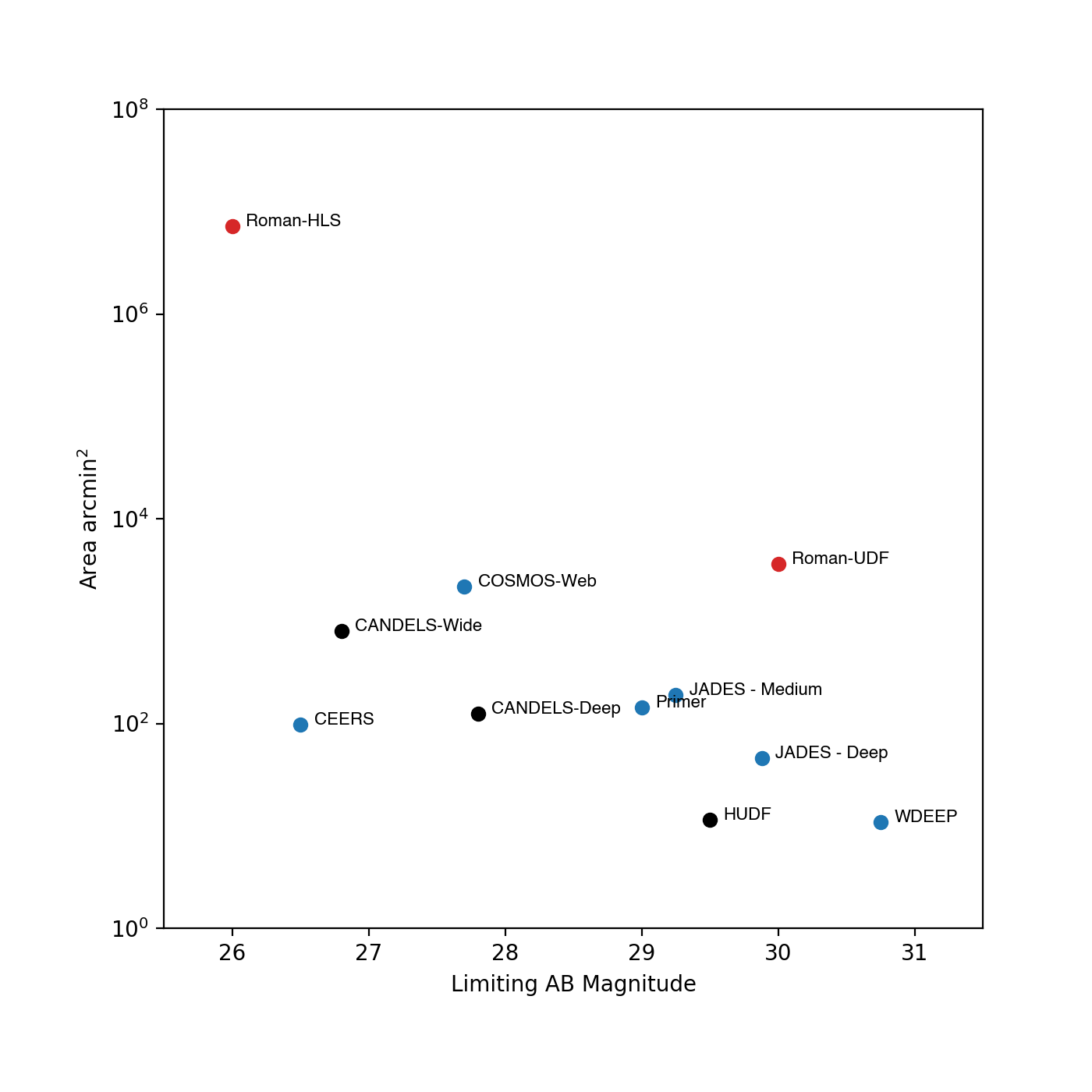Nicole Drakos
Research Blog
Welcome to my Research Blog.
This is mostly meant to document what I am working on for myself, and to communicate with my colleagues. It is likely filled with errors!
This project is maintained by ndrakos
Galaxy Surveys for EoR
In this post I’m going to outline some of the upcoming galaxy surveys that probe the EoR. My main scientific question is how to compare these different surveys. I want to be able to quantify how well different surveys can constrain models of the EoR.
JWST Surveys
There is an overview of JWST surveys that will study the EoR in Robertson 2021.

Table of surveys
Here is the list of surveys that I will look at (at least to start). For now, I am focusing on the NIRCam parts of the JWST surveys (not MIRI).

Area versus depth
The main difference/easiest comparison to make between these surveys is area versus depth. This is summarized below:

You can see that in general, the JWST surveys go slightly deeper than their HST counterparts. The Roman surveys will increase the area covered by the surveys.
One interesting point on this plot is CEERS—this survey does not go very deep for the area it will cover. However, I think this is because it is more focused on getting spectroscopy (I have to look into the differences between the surveys in more detail).
Other considerations
Area and depth give a general picture of how many detectable galaxies there will be in a survey, and also determine the amount of cosmic variance. This will give a good indication of how well the UV luminosity function can be constrained by different surveys.
But when comparing between telescopes, there are also resolution and wavelength considerations. Different surveys will use different filters. Additionally, spectroscopic surveys will get much more information than photometric surveys (spectral lines, accurate redshifts).
Key quantities
Really what I want to know are the ability of the survey to constrain
- UV luminosity function
- xi.. from SEDs?
- fesc? Does this need spectroscopy?
- Maybe also look into topology